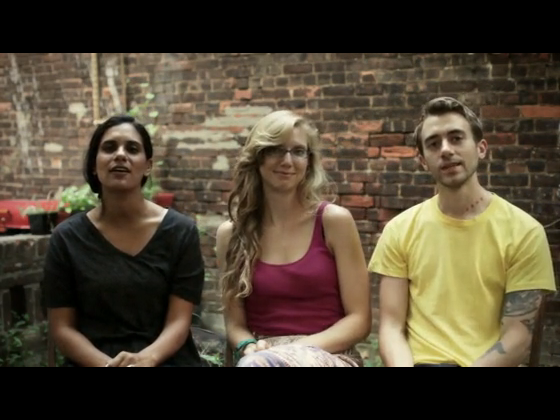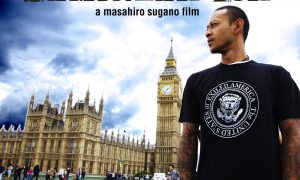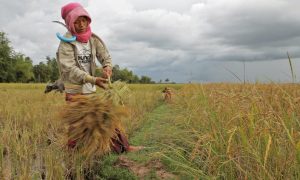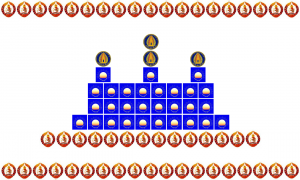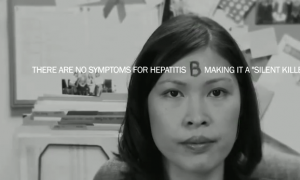The Lotus that Went to the Sea is an upcoming documentary about modern Cambodian artists. The trailer that has been released portends sophisticated production values with an intimate portrayal of the artists, and the associated fundraising campaign has succeeded beyond expectations. To find out more, The Khmerican recently posed some questions to Francesca Sonara and Alta Buden, the New-York based producers for the documentary. Sonara is an independent curator interested in contemporary Asian art; Buden is a visual artist who has traveled extensively across Southeast Asia. Recently, the two provided us an exclusive interview.
Q. In the description of your project, you mention the Cambodian narrative that the artists you profile are trying to carry forward. From your perspective, what are the most prominent characteristics of that narrative? In other words, what kind of story is it, and what are some of the artistic goals you’ve been documenting?
A. The genocide carried out by the Khmer Rouge was particular in that it was a cultural and intellectual massacre. It created a vacuum of scholarly inquiry and created a deep-seated ethos of survivalism in the nation’s population. It was startlingly effective in halting creative endeavors as it abolished the importance of critical thinking in its pursuit of a peasant-based society.
It was abundantly clear to our team that the artists we worked with were focused on re-igniting or accelerating their society’s imagination and analytical abilities–ones that were not necessarily eradicated, just perhaps dormant or hidden. Many of the artists we met with were born right after the Khmer Rouge fell, and it was inspiring to see them take so much initiative and help rectify the wrongs inflicted on their country’s mindset. They want to show people the potential of art to not only remember the trauma of the past but to also help cultivate a stronger, brighter future society. The narrative is really the importance of narrative itself–of keeping stories alive and sharing them with as many people as possible. In a sense, the Khmer Rouge tried to close the book, and these artists are turning the pages.
Q. What connections do you see between Cambodian artists and Khmer Americans? How is art produced there relevant to people in America more generally?
A. The obvious relevance is America’s influence on Cambodia’s history via the Vietnam War. Many people don’t realize just how victimized the nation was throughout that period. Cambodia was our unfortunate enemy in a completely misguided shadow war. The younger generation of artists signifies a lot for a healing nation. Much of their work attempts to document Cambodia through a lens of remembrance for a difficult history. They want it on the record–their record, Vietnam’s and America’s. Their history is inextricably linked to ours, and that will not be forgotten. Khmer Americans, Khmers, and Americans will all find a connection to this work as it directly affected how and why Khmers immigrated to the United States. Their pasts are correlated whether or not they realize it. This had such an impact on us–we were so far away from home, yet so close to our own history.
Q. As you’ve alluded to, it is difficult to talk about Cambodia without revisiting the extremes of its history, from ancient splendor to only decades-old tragedy. What approaches or stances do Cambodian artists take to acknowledge those times yet go beyond them into a movement uniquely their own?
A: Their work is undeniably contemporary–in technique, execution and concept. And in a sense, the fact that so many of them are making work is a sign of progress. Some–like Vandy Rattana in his Bomb Ponds series–are more overt in their historical references while others–such as Khvay Samnang–are making work that specifically targets Cambodia’s present context. There seems to be an omnipresent dualism in the work. There is this sense of–this is what happened, this is where we have come from, this is what we want to happen next. It’s a matter of intent more than result. When you listen to the artists speak or read their statements, you begin to notice that the past is never that far away. It is always a concern. However, the urgency of producing and thinking through new issues is a very future-oriented process. It bespeaks their consideration for keeping an eye on tomorrow.
Q. An uplifting, hopeful tone is expressed in the potential of art to make changes in society. What obstacles or moments of doubt during the film-making process challenged that tone?
A. This is really a matter of infrastructure. Sometimes it felt like these artists were working so hard and nobody was really paying attention. In a world where a national contemporary art museum is increasingly ubiquitous, Cambodia’s Royal University of Fine Arts does not even offer contemporary arts coursework. The individuals we followed really relied on foreigners coming in to teach them at workshops, or they were extremely eager to qualify for artist residencies internationally. But the fact is that even with so little institutional support, so much is being accomplished. And that is hopeful. You cannot deny art’s potential when you see so many people just go for it–just grabbing their camera or paintbrush and creating, regardless of what is or isn’t available. The proof is in the countless photographs, videos, performances, paintings and sculptures being made. Just seeing how Sa Sa Bassac’s first eight months have gone–an impressive line up of exhibitions–reminds us that art is a powerful tool.
Q. What are the next steps in getting this documentary made? What are your plans after it has been completed?
A: We are thrilled that our Kickstarter campaign has been so successful. Now that we know we have the funds to finish the film, it is a matter of getting some refined transcriptions (translating from Khmer to English is no small task), scoring the film, and editing it all together. We are committed to making this documentary extremely informative and also an aesthetically thoughtful film. We are sharing these artists’ lives and work, and we want it to be an artistic experience in and of itself. After it’s completed, our goal is pretty single-minded: get it seen! We have some ideas in the works, but you’ll just have to wait and see!
—
Visit http://www.lotustothesea.com for more information.


